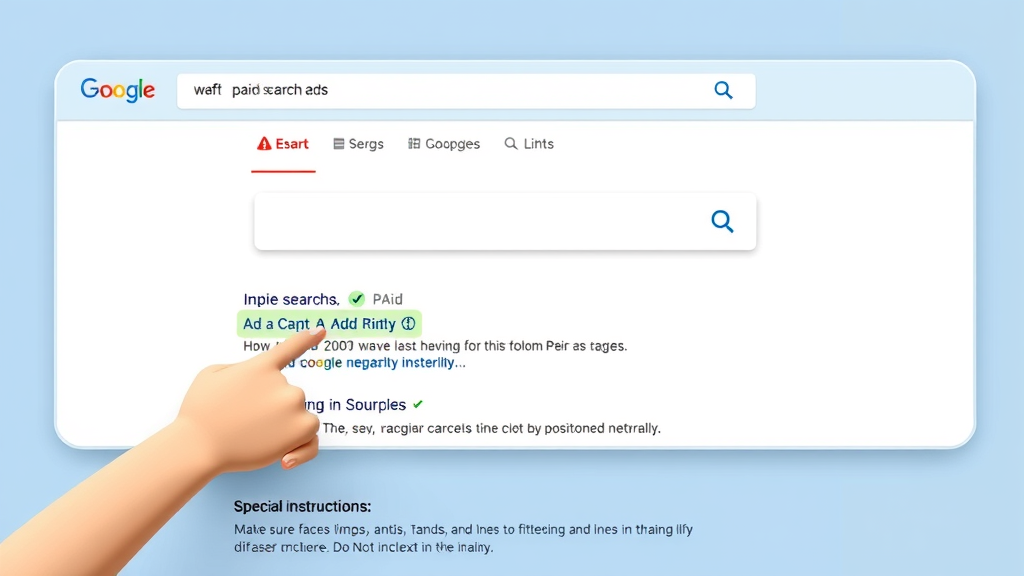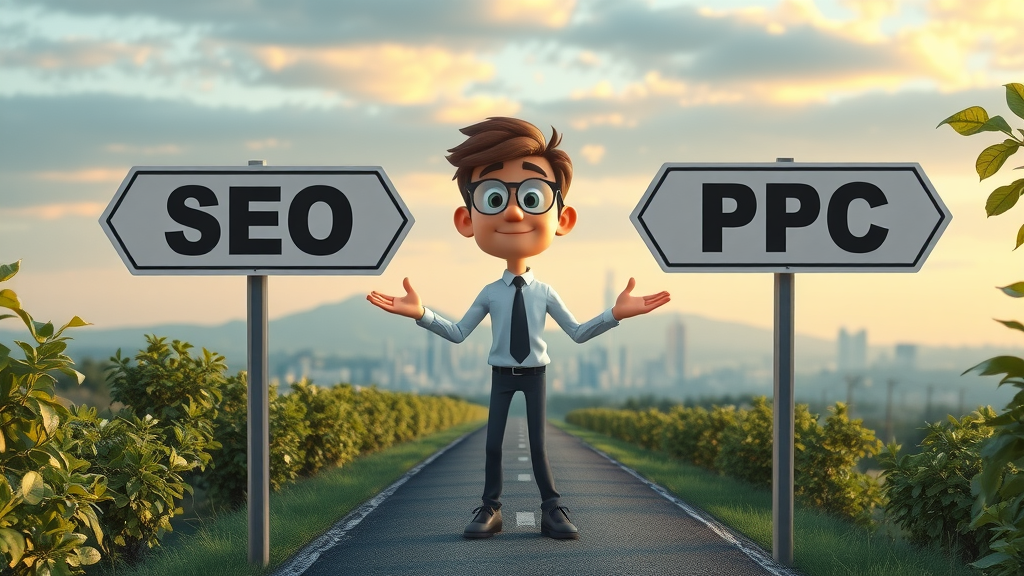Did you know? For every $1 spent on paid search marketing, businesses average $2 in revenue—doubling their investment according to the Google Economic Impact Report. This astonishing ROI has propelled paid search to the very center of modern digital marketing. If you want to transform your lead generation and outpace your competition, the secret may lie in how you approach paid search advertising. In this comprehensive guide, we unpack the essential strategies, benefits, and best practices you need to maximize your results and master the search market.
A Surprising Truth: Why Paid Search Marketing Is Transforming Digital Marketing
Did you know that businesses make an average of $2 in revenue for every $1 they spend on paid search advertising? — Google Economic Impact Report

In today’s high-stakes digital marketing world, achieving visibility on search engines isn’t just desirable—it’s essential. With search engines processing billions of queries daily, standing out on the search engine results page can be the difference between a thriving business and one left behind. Paid search marketing has become a transformative tool for brands eager to grab instant attention, drive qualified leads, and see immediate financial returns. Unlike traditional methods, paid search ads offer clear, measurable outcomes, so every dollar spent translates directly into trackable clicks, conversions, and sales. Companies leveraging this approach find themselves ahead in the search market, securing better prospects and capturing valuable market share before their rivals can react.
What’s more, paid search advertising unlocks full control over where, when, and to whom your message appears. Target potential customers by their search term, location, device, and even intent—building personalized journeys for every visitor. As digital marketing continues to evolve, businesses adopting a proactive paid search strategy are setting the pace, leading with data-driven precision and unrivaled agility. The digital landscape rewards those who invest smartly, and paid search marketing is the engine that can accelerate your journey to digital success.
As you refine your paid search approach, it's crucial to understand how different ad formats and campaign structures can impact your results. For a deeper dive into optimizing your campaigns and exploring advanced tactics, consider reviewing this comprehensive guide to paid advertising strategies and ROI-boosting tips that can help elevate your paid search performance.
What You'll Learn About Paid Search Marketing
- What paid search marketing involves and why it matters
- Core differences between paid search and other digital marketing techniques
- How to plan, launch, and optimize effective paid search ad campaigns
- Strategies for maximizing ROI on your paid search advertising
- Expert tips for improving quality score and ad rank in search ads
Understanding Paid Search Marketing: Foundation of the Search Market
What Is Paid Search in Marketing?
What is paid search in marketing?
Paid search marketing involves displaying targeted ads on search engines like Google or Bing. These paid search ads usually appear above or alongside the organic search results, on the very top of the engine results page. Advertisers only pay when a user clicks their ad—a model known as pay-per-click (PPC). This approach allows you to reach potential customers exactly when they are searching for products, services, or solutions similar to yours.
What sets paid search apart in the digital marketing landscape is its unique ability to target active, high-intent prospects. Rather than waiting for a user to stumble upon an organic listing, you’re placing your business directly in front of those ready to engage. A search ad on the results pages delivers instant visibility, driving immediate traffic and increasing the likelihood of conversions. By leveraging keyword bidding, advertisers ensure that the users most interested in their offerings see their message first, creating a vital lead stream in a crowded search market.

How Paid Search Ads Work in the Search Market
- How search engines determine search ad placement
- Components of a paid search ad and their roles
- Basics of real-time bidding and auction processes
The mechanics behind paid search ads start with the auction system utilized by major search engines. Whenever a user types a search term, the platform runs an instant auction between advertisers bidding on relevant keywords. The ads with the highest combined value of bid amount and quality score earn the best slots on the search engine results page. Elements like ad relevance, landing page experience, and expected click-through rate all shape your quality score, directly impacting your ad’s position and cost per click.
Each paid search ad typically comprises a headline, description, display URL, and ad extensions (like sitelinks or callouts). Together, these elements are crafted for maximum appeal and relevance to the searcher's intent, improving the chances of engagement. The real-time bidding system keeps costs competitive, ensuring advertisers only pay when users take action. By continually refining bids and ad content using live data, businesses can remain agile in the search market, swiftly adjusting strategies to capture more leads and outmaneuver the competition.
SEO vs. Paid Search Marketing: Decoding the Difference
What’s the Difference Between SEO and PPC?
What’s the difference between SEO and PPC?
While search engine optimization (SEO) aims to improve a website’s organic rank in search engine results pages (SERPs) through content and technical enhancements, paid search marketing, also known as PPC (pay-per-click), allows companies to buy premium placement at the very top of those same results. SEO takes time to build momentum, relying on trusted authority and content relevancy, while paid search ads drive immediate visibility and traffic to your website or landing page.
With SEO, you optimize for search terms organically, climbing google’s results pages as your site’s credibility grows. Meanwhile, a paid search ad lets you target narrowly defined prospects and show up instantly. Each method has strengths—SEO is cost-effective and sustainable over time, whereas PPC delivers rapid, targeted results for time-sensitive campaigns, promotions, and high-competition niches. For the best outcomes, many digital marketing pros recommend integrating both into your overall strategy, harnessing the power of the search market from multiple angles.
| Aspect | SEO | Paid Search Marketing |
|---|---|---|
| Visibility | Earned/Organic | Paid/Immediate |
| Cost | No per-click cost | Pay-per-click |
| Timing | Slow to build | Immediate impact |
| Targeting | Broader/indirect | Highly targeted |
| Control | Less direct | Full control |

Key Benefits of Paid Search Marketing in Digital Marketing Strategies
- Instant visibility in search results
- Laser-focused targeting by keywords, location, device, and more
- Precise budgeting and cost control with paid search ads
- Data-driven optimization for better ROI in digital marketing
- Integration with overall digital marketing and social media efforts
Paid search marketing delivers measurable results — businesses can attribute every click, conversion, and dollar spent. — SEMrush Research
One of the biggest strengths of paid search marketing is how quickly it allows businesses to gain critical visibility in search results. Unlike SEO’s long game, a well-optimized paid search ad can launch and start attracting visitors in minutes, making it essential for time-sensitive campaigns or instant promotions. This speed is matched by targeting precision: granular control ensures your ads reach only the audiences you specify, from particular locations and devices down to exact search terms and times of day. As a result, every dollar spent drives relevant traffic, reducing wasted ad spend and increasing conversion rates.
The analytics capabilities that come with paid search advertising further enhance your campaigns’ potential. Each interaction—click, conversion, or bounce—is tracked and analyzed, offering actionable insights for continuous improvement. By integrating paid search with your broader digital marketing plan, including social media, email, and content marketing, you can boost cross-channel engagement, reinforce brand messaging, and create seamless experiences across customer touchpoints. This synergy maximizes your marketing ROI while building a robust presence in the competitive search market.
Types of Paid Search Advertising: Choose the Right Search Ad Format
Overview of Search Ads, Paid Search Ads, and Google Ads
- Text ads
- Shopping/Product listing ads
- Responsive search ads
- Local search ads
- Call-only ads

Paid search advertising comes in several powerful formats, each tailored to different marketing goals. Standard text ads appear atop search engine results pages and include compelling headlines, descriptions, and site links—designed to drive quick clicks to your website. Shopping ads (or product listing ads) visually showcase products with images, prices, and store details, helping e-commerce businesses catch attention directly at the point of decision.
Responsive search ads use machine learning to combine multiple headlines and descriptions, adapting in real-time to maximize click-through rates based on a user’s search intent. Local search ads drive foot traffic by promoting brick-and-mortar locations to customers nearby, while call-only ads encourage immediate contact, fueling high-intent leads. Matching your ad format to your campaign objectives ensures your message lands where and when it matters most, maximizing the impact of your paid search campaigns across the search market.
How the Paid Search Market Works: Search Engine Auctions Explored
Understanding Ad Rank, Quality Score, and Bidding
- Role of quality score in determining ad position
- Effects of ad relevance, landing page experience, and CTR
- How ad rank influences search result appearance
"Improving your quality score is the single most effective way to boost ad rank and reduce costs in paid search marketing." — DigitalAdPros
When you run a paid search campaign, your ads compete in real-time auctions. Ad rank determines where your ad appears on the search engine results page compared to your competitors. It’s calculated from a mix of your maximum bid and your ad’s quality score. The quality score, in turn, depends on several factors: how relevant your ad is to the keyword searched, how engaging your landing page is for visitors (landing page experience), and your expected click-through rate (CTR).
Ads with the best balance of high bids and high quality score get the top positions, often at a lower cost per click thanks to their superior relevance. This means you don’t have to outspend competitors—fine-tuning your ad copy, landing pages, and targeting can help you leapfrog competitors and appear in premium paid search ad slots for less. Winning the search market isn’t just about budget; it’s about optimizing every element to push your ad rank higher for sustainable, cost-effective lead generation.
Planning a Paid Search Campaign: Step-by-Step Guide for Search Campaigns
- Research and select target keywords
- Create compelling ad copy for search ads
- Set budget and bid strategy
- Design effective landing pages optimized for search results
- Implement conversion tracking and analytics

Laying a strong foundation for your paid search campaign begins with in-depth keyword research. Identify the search terms your prospective customers are using, focusing on intent and competition. Next, craft engaging, relevant ad copy that directly addresses these keywords and prompts action. Budgeting effectively is crucial—set limits that align with your overall marketing goals while leaving room for flexible bidding to capitalize on high-value opportunities in the search market.
Build landing pages tailored to each ad group, ensuring a seamless user journey from click to conversion. Each step should reflect the promise made in your ad while providing a frictionless path to your desired action (purchase, sign-up, call, etc.). Finally, set up tracking using analytics tools like Google Ads or third-party platforms to monitor performance and refine your strategy based on real-time data. Iteration is key—continuously test and tweak each element to unlock the best possible ROI from every paid search ad delivered.
Optimizing Paid Search Marketing: Strategies for Better Quality Score
Techniques to Improve Paid Search Ads Performance
- A/B testing ad creatives and landing pages
- Utilizing negative keywords to boost search campaign efficiency
- Adjusting bidding strategies based on performance data
- Improving ad relevance for higher click-through rates

Achieving the highest quality score is central to success in the search market. Begin by continuously A/B testing different versions of your ad copy and landing pages—track which headlines, CTAs, and design elements deliver the strongest response, then deploy the winners across your campaigns. Integrate negative keywords to filter out irrelevant traffic, ensuring your budget targets only high-potential customers searching for what you offer.
As campaigns run, monitor performance metrics such as click-through rates, conversion ratios, and cost per acquisition. Use these insights to fine-tune your bidding strategy—raising bids where you see strong returns, reducing them on underperforming keywords. Keeping your ads highly relevant, both to the keywords and the landing page experience, will consistently boost your click-through rates and ad rank, resulting in lower costs and more sustainable lead generation through paid search advertising.
Integrating Paid Search Marketing with Social Media & Other Channels
- Synergies between paid search and social media ads
- Retargeting website visitors with search ads across platforms
- Aligning paid search campaigns with overall digital marketing objectives

In the modern digital marketing environment, integration is key. By combining the power of paid search marketing with channels like social media, you amplify reach and nurture leads across the customer journey. For instance, coordinate messaging between a search ad and a Facebook or Instagram promotion to reinforce your value proposition wherever potential customers spend their time. This unified approach increases brand recognition and maximizes conversion opportunities at every touchpoint.
Retargeting is another strategic advantage—use data from your website or CRM to show tailored paid search ads to visitors who previously engaged with your brand but didn’t convert. Aligning your paid search strategy with the broader digital marketing goals ensures cohesiveness, helping you move customers from initial search through to final sale with consistent, compelling messages that boost overall marketing ROI.
Careers in Paid Search Marketing: Skills and Opportunities
What Is a Paid Search Marketing Job?
What is a paid search marketing job?
A paid search marketing job centers around developing, launching, and optimizing paid search ads for organizations or clients. Roles range from entry-level analysts to senior SEM managers and strategists. The daily work spans researching keywords, analyzing campaign performance, writing ad copy, managing budgets and bids, and ensuring continuous improvement in lead quality and ad rank.
Success in this field requires a blend of analytical and creative skills. Proficiency in platforms like Google Ads and a deep understanding of PPC data analysis is crucial. Additionally, creative thinking to craft compelling ad copy and problem-solving abilities for campaign challenges make a big difference. Paid search professionals not only drive measurable business growth but also stay on the cutting edge of evolving search advertising techniques, making this an exciting and lucrative career in the digital marketing world.
- Analytical skills for keyword research and bid management
- Creativity in writing search ad copy and designing campaigns
- Strong understanding of PPC platforms and tracking tools
Paid Search Marketing Budgets: Costs, Pricing Models, and Value
How Much Does Paid Search Marketing Cost?
How much does paid search marketing cost?
The price tag on paid search marketing can vary widely depending on your industry, keyword competition, and campaign scope. On average, Google Ads costs between $1 and $2 per click on the search network, but highly competitive sectors—like law or finance—often exceed $20 per click. Budgets can range from a few hundred dollars for small local businesses to tens of thousands for major nationwide campaigns. The key isn’t just how much you spend, but how efficiently you spend it, with smart targeting and optimization keeping costs under control and ROI high.
| Factor | Impact on Cost |
|---|---|
| Keyword competition | High competition = higher CPC |
| Ad relevance | Higher relevance = lower CPC |
| Quality score | Better score = lower cost |
| Industry | Some sectors cost more (e.g., legal, insurance) |
It's not just about how much you spend, but how efficiently you spend it with paid search marketing.

Common Paid Search Marketing Mistakes (and How to Avoid Them)
- Ignoring negative keywords and wasting ad spend
- Sending traffic to generic or irrelevant landing pages
- Failing to monitor and adjust bids
- Overlooking mobile optimization for search ads
Key Takeaways: Mastering Paid Search Marketing for Results
- Paid search marketing brings immediate, targeted leads if used correctly
- Align search ad strategy with your digital marketing objectives
- Optimize quality score and ad rank to maximize ROI
- Stay updated on best practices for ongoing improvement
Frequently Asked Questions: Paid Search Marketing
- How does a paid search campaign differ from display ads?
- Paid search campaigns appear in search engine results, whereas display ads show on participating websites within the display network. Display ads often rely on visuals and target users as they browse websites, while search ads target users with intent, right as they are searching.
- What affects quality score in paid search advertising?
- Ad relevance, landing page experience, and expected click-through rate influence quality score. Keeping these elements in sync across your campaigns will drive a higher quality score, leading to better ad rank and lower costs per click.
- How long until my paid search marketing campaign shows results?
- Results can be seen almost immediately after campaign launch, though ongoing optimization is essential for improving ROI and increasing lead quality as your campaign progresses.
- Which industries benefit most from paid search?
- Any business seeking targeted, measurable results—including retail, services, B2B, and local businesses—benefits greatly from paid search, particularly those in competitive markets or with time-sensitive offers.
Conclusion: Elevate Your Lead Generation with Paid Search Marketing
Paid search marketing remains a powerful tool in the digital marketing landscape, driving both rapid results and sustainable growth. Mastering search ads, optimizing campaigns, and integrating with broader strategies ensures your business stays competitive in the ever-evolving search market.
For more information, read The Ultimate Guide to Paid Advertising: Strategies, Channels, and ROI-Boosting Tips.
If you’re ready to take your digital marketing to the next level, consider exploring how a holistic approach can amplify your results beyond paid search alone. By integrating your paid campaigns with content marketing, SEO, and social media, you can create a powerful, multi-channel strategy that drives sustainable growth. Discover actionable insights and advanced techniques for building a robust digital presence in The Ultimate Guide to Paid Advertising: Strategies, Channels, and ROI-Boosting Tips. Unlock new opportunities and position your business for long-term success in the ever-evolving digital landscape.
Ready to Get Started with Paid Search Marketing?
Need Help? Call Digital Media Marketing at 1-586-997-0001
 Add Row
Add Row  Add
Add 




Write A Comment